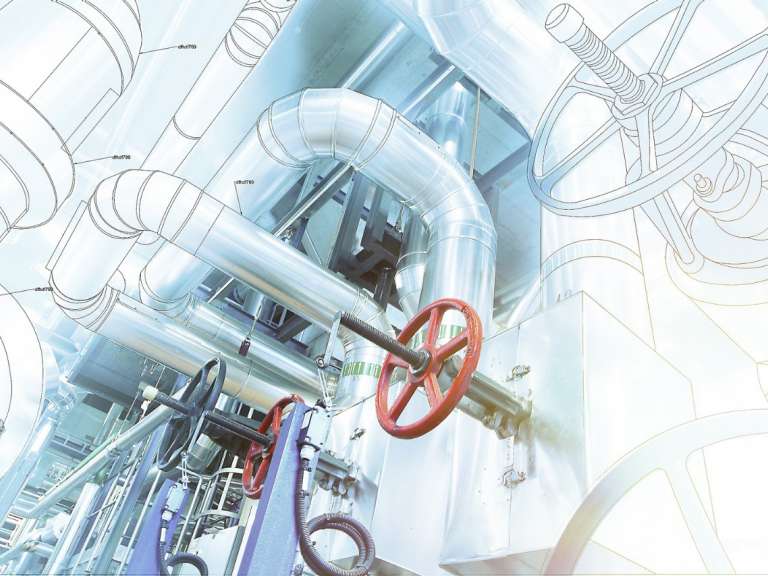Virtual reality training systems for highly sensitized or dangerous jobs are gaining popularity in many industries—including the power-generation sector.
The technology can improve trainees' understanding of and familiarity with hazardous areas or tasks, without the need to go through the arduous process of gaining security clearance and completing rigorous safety training. Instead it transports them to a virtual version of the dangerous environment.
The Power of VR Training Systems
VR offers a more hands-on training experience. Virtual reality training systems, delivered through the Oculus Rift or HTC Vive headsets, can simulate realistic and hazardous situations in the plant, such as chemical spills, working at height, and working in confined spaces. Should a health and safety issue arise in the actual hazardous environment, employees have already experienced such an incident in the virtual environment and are more likely to react in an appropriate manner.
Professors and scientists have advocated for this approach. Academics at the University of Exeter, for example, are working in collaboration with Cineon Productions to design VR technology to train nuclear scientists, as well as pilots and surgeons.
Dr. Sam Vine, from the university, says that using these techniques brings training "into the 21st century." She continues: "We have the capability to create computer-generated (virtual) or 360-degree filmed replications of dangerous training environments that trainees can experience through their headsets. Combined with our understanding of the psychology of learning and performing under pressure, we believe this to be a highly effective way to learn and perfect skills."
Virtual Reality Beyond Training
Because virtual reality is primarily designed to enhance how users interact with the world around them, it has many potential use cases. The power sector, despite its reputation for being a slow adopter of new innovations, is experimenting with the technology even beyond virtual reality training systems.
Inspecting and maintaining equipment can be a huge challenge for utilities, which may have hundreds of thousands of miles of transmission and distribution lines, as well as other large, complex assets to manage. By using data in virtual reality models of critical infrastructure, plant managers can anticipate potential problems before they happen and come up with solutions. Furthermore, when something fails, virtual reality, incorporated with data, can be used to help pinpoint the area of failure.
The California utility PG&E is working with Space-Time Insight to use plant data and virtual reality to provide a quicker and safer way for workers to inspect equipment, according to Fortune. Space-Time has created a 3D copy of one of PG&E's substations, so engineers can see plant data in 3D. This essentially brings the data to life. When something goes wrong in the plant, the cause of the problem can be more easily identified using the virtual copy. Engineers can use VR to walk through the model of the facility and troubleshoot.
Virtual reality can also provide a window into the world of nuclear power plant design and operation for the public, which often finds the nuclear sector inaccessible.
The Shanghai Institute of Applied Physics in China is working on building an experimental reactor that will reduce the likelihood of a meltdown. In March, the institute used virtual reality to demonstrate these new designs to journalists and local stakeholders.
The U.K. National Grid also used virtual reality to help the public learn about its proposal to connect a new nuclear power plant to the country's electricity network, according to World Nuclear News. Through virtual reality, people can better understand the work and how it might affect their community.
What's Next?
More complex applications for virtual reality in the power sector are also being explored. In December 2016, the Dubai Electricity and Water Authority (DEWA) launched a pilot project for what it claims is the world's first virtual reality remote inspection for utility maintenance, according to Technical Review Middle East. The pilot project combines autonomous robots and Internet of Things technology to remotely inspect DEWA's electricity and water networks. DEWA is currently deploying the system as a proof of concept in a high-voltage power tunnel in Dubai.
Potentially, virtual reality controls could also be used to guide ROVs sent into hazardous areas after a disaster. Engineers could control the robots, making them open doors and turn off valves as if the engineers were actually in the breached area.
Virtual reality is a dynamic tool for the power sector, not just for staff training and for dealing with the most dangerous tasks, but also for public relations, design, troubleshooting, and much more.
While the technology is poised to revolutionize many aspects of the power sector, particularly for nuclear plants, certain applications could introduce new threats to cyber security, which must be mitigated. However, this shouldn't be considered a barrier to adoption. And while the current price of VR is a deal-breaking factor for some organizations, as the technology improves and gains popularity, costs are likely to decline.
As most virtual reality applications are custom-made for a client's need, its potential use is only as limited as your team's imagination.
